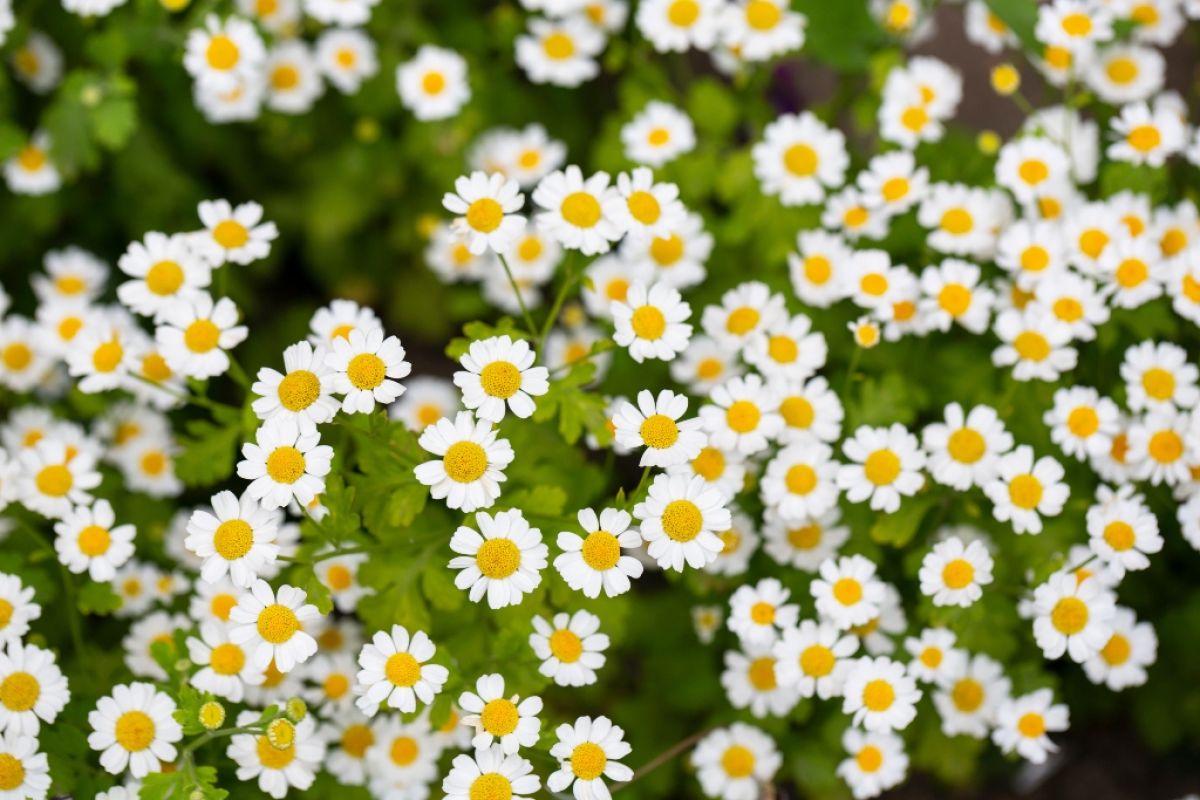Focus on flowers.
The botanical name for feverfew is Chrysanthemum parthenium because according to Plutarch a worker fell during the construction of the Greek parthenon, and his life was saved by this plant’s medicinal properties. The common name of feverfew is because it is used to reduce fevers.
It is native to southeastern Europe but is very happy in parts of North America and Britain.
It moves around my garden.
The ancients brewed a tea from the flowers, mixed it with wine and nutmeg, and drank it throughout the day to treat colds, expel worms, and help women become pregnant. Fortunately, I don't need it for any of those things, but I love the little flowers, which are like daisies with short white petals surrounding a yellow disc. The pinnate lacy green leaves are aromatic. It grows in sun or part shade in our clay soils, as well as in sandy soils, and survives cold winters. If it is cut back after the first flush of bloom in June, it keeps blooming and is a long-lasting cut flower.
The leaves taste bitter, so bees avoid it, as do all other insects. The leaves in a bread sandwich are believed to cure migraine headaches, but it tastes terrible, even though it apparently does work.
This is Moya Andrews, and today we focused on Chrysanthemum parthenium.










